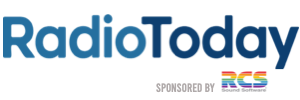Radio broadcasters across the UK are increasingly turning to data analytics to inform programming decisions.
Recent developments reveal how both national and local stations are using listener insight tools to fine-tune their content strategies. These tools help broadcasters better understand audience behaviour, preferences, and trends, enabling them to create shows that attract more listeners and keep them engaged for longer periods. As a result, programming is becoming more targeted and responsive to what listeners want.
By analysing which shows drive peak engagement, stations can now adjust line-ups more swiftly than ever. For example, a rise in interest in late-night talk shows may prompt shifts in presenter focus or extended run times. These tools also monitor social media and listener feedback, helping producers identify trending topics. For community and independent broadcasters, affordable analytics platforms are levelling the playing field. Stations like Radio Caroline and Riverside Radio now rely on digital feedback to guide weekend scheduling and music curation.
Data also plays a crucial role in editorial sensitivity. Some stations track listener engagement around emerging tech and lifestyle trends discussed in forums and comment threads. This includes cryptocurrency and references to platforms operating outside the UK’s regulatory systems, such as non GamStop betting sites. These platforms attract attention by offering features not typically available from UK-licensed operators, including a wider range of betting markets and fewer restrictions on deposit limits. Monitoring these discussions helps broadcasters better understand audience interests and concerns, enabling them to address such content thoughtfully and responsibly within their programming.
Understanding audience demographics is equally important. Analytics reveal how content resonates with different age groups and regions. For instance, younger audiences may favour podcast-style segments or TikTok-inspired features, while older listeners still value news bulletins and in-depth interviews during peak commuting hours. These insights help programmers find the right tone and pace throughout the day.
Advertising strategy also benefits significantly from analytics. Knowing when and how specific demographics tune in allows stations to match advertisers with the most effective slots. As media buying becomes increasingly data-driven, this precision helps commercial stations boost revenue and reduce wastage.
Importantly, while data tools provide strong guidance, human judgement remains essential. Producers and presenters interpret the numbers within a wider cultural and editorial context. The aim is not to chase clicks but to create formats that resonate while maintaining credibility and trust.
UK radio’s embrace of analytics reflects a broader shift in how content is curated and delivered amid intensifying competition for attention. Whether it is Radio X trialling new genre blocks or BBC Sounds tailoring playlists based on user listening history, the intelligent use of data is helping stations stay relevant, agile and responsive in a rapidly changing landscape.
As data analytics continue to evolve, UK radio stations are well placed to harness these insights for smarter programming and deeper audience connection. Embracing this technology while upholding editorial integrity will be key to thriving in an increasingly competitive media environment. For broadcasters willing to innovate thoughtfully, the future promises exciting opportunities to engage listeners in fresh and meaningful ways.

